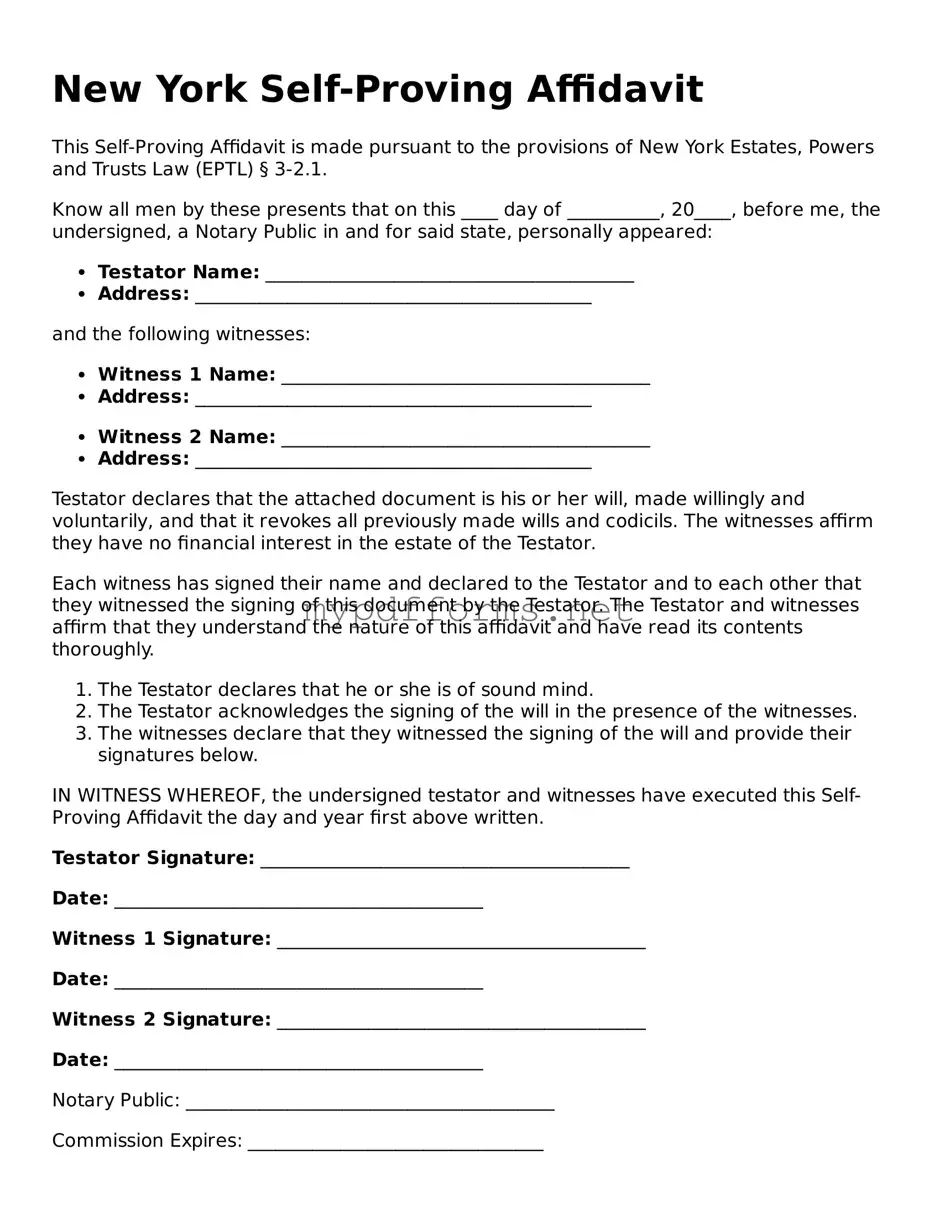The New York Self-Proving Affidavit form serves as an important tool in the estate planning process, providing a streamlined method for validating a will. This form allows the testator and witnesses to affirm the authenticity of the will, thereby simplifying the probate process. By executing this affidavit, the testator confirms their identity and mental capacity at the time of signing, while the witnesses attest to the testator's voluntary act of signing the document. This dual affirmation reduces the need for witnesses to appear in court, saving time and resources for both the estate and the court system. The Self-Proving Affidavit is particularly beneficial in cases where the validity of a will may be challenged, as it provides a presumption of validity. Understanding the requirements and implications of this form is essential for anyone involved in estate planning in New York, ensuring that the wishes of the deceased are honored with minimal complications.
